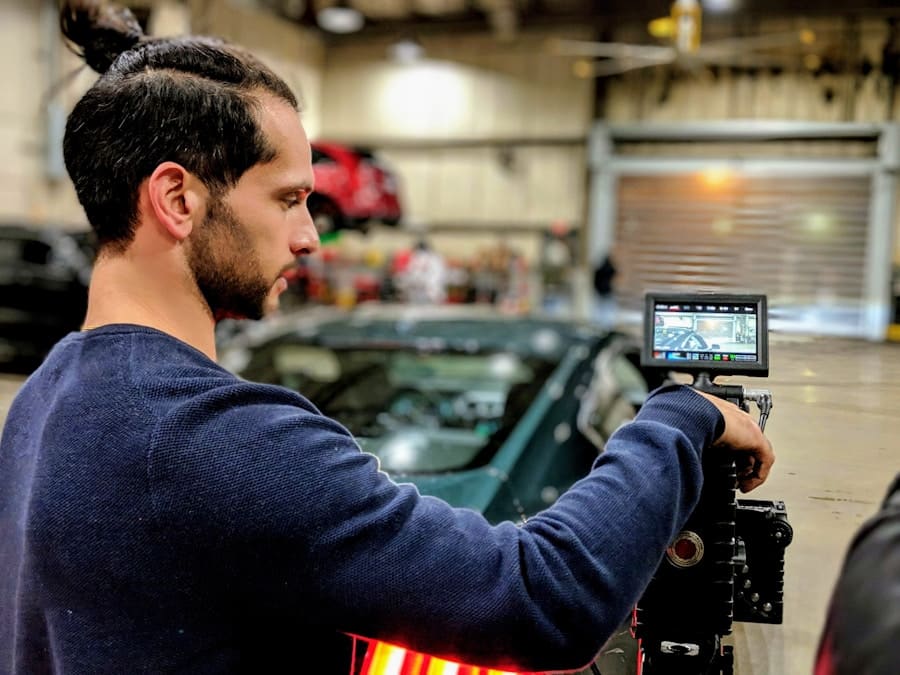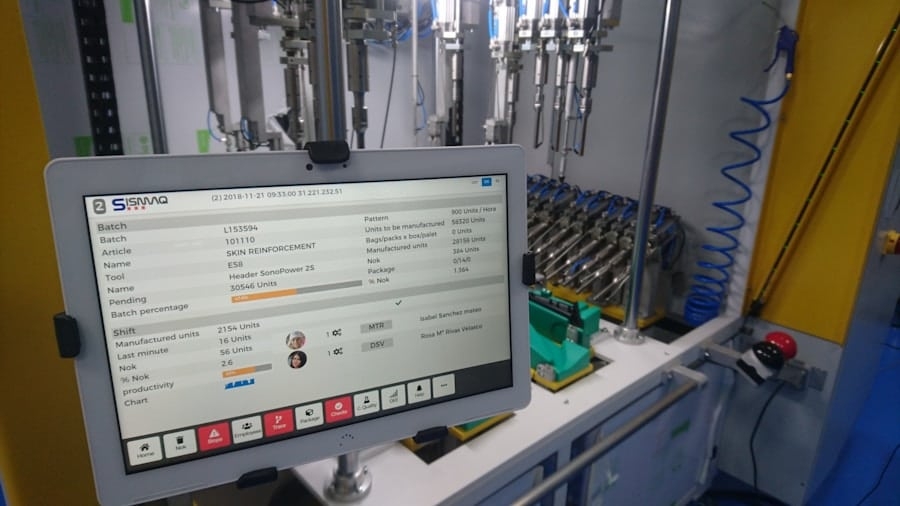Augmented Reality (AR) has emerged as a transformative technology in various sectors, with manufacturing being one of the most promising fields for its application. By overlaying digital information onto the physical world, AR enhances the way workers interact with machinery, processes, and data. This technology allows for real-time visualization of complex information, enabling operators to make informed decisions quickly.
As industries strive for greater efficiency and competitiveness, AR offers innovative solutions that can streamline operations and improve overall productivity. The integration of AR into manufacturing processes is not merely a trend; it represents a fundamental shift in how factories operate. With the advent of smart factories and Industry 4.0, the need for advanced technologies that facilitate communication and collaboration has never been more critical.
AR serves as a bridge between the digital and physical realms, providing workers with the tools they need to navigate increasingly complex manufacturing environments. As companies adopt AR solutions, they are not only enhancing their operational capabilities but also redefining the future of work in manufacturing.
Key Takeaways
- AR (Augmented Reality) is a technology that overlays digital information onto the physical world, and it has the potential to revolutionize manufacturing operations.
- AR in manufacturing can improve efficiency, productivity, quality control, maintenance, worker training, safety, and seamless integration with other technologies.
- AR can enhance factory floor operations by providing real-time information, instructions, and visualizations to workers, reducing errors and increasing accuracy.
- AR can play a crucial role in quality control and maintenance by providing real-time data and visualizations to identify and address issues promptly.
- AR can have a significant impact on worker training and safety by providing immersive and interactive training experiences and real-time safety alerts.
The Benefits of AR in Factory Floor Operations
Enhanced Efficiency and Accuracy
This access to real-time information enables workers to perform tasks more efficiently and with greater accuracy. Moreover, it facilitates better communication among team members. In a manufacturing environment where collaboration is essential, AR can help bridge gaps between different departments or shifts.
Improved Collaboration and Problem-Solving
For example, a technician troubleshooting a machine can share their AR view with a remote expert who can provide guidance in real-time. This capability not only accelerates problem-solving but also fosters a culture of teamwork and knowledge sharing within the organization.
Boosting Overall Performance
As a result, factories can operate more cohesively, leading to improved overall performance.
How AR Improves Efficiency and Productivity

The implementation of AR technologies significantly enhances efficiency and productivity on the factory floor. By providing workers with visual aids and contextual information, AR reduces the time spent searching for data or clarifying instructions. For example, in complex assembly tasks, AR can highlight specific components that need to be installed or adjusted, allowing workers to focus on execution rather than interpretation.
This streamlined approach minimizes downtime and accelerates production cycles. Additionally, AR can optimize workflow by enabling better task management. With AR applications, supervisors can monitor progress in real-time and allocate resources more effectively.
For instance, if a particular workstation is lagging behind schedule, supervisors can quickly identify the issue through AR analytics and redistribute tasks or provide additional support where needed. This dynamic approach to resource management not only boosts productivity but also enhances worker satisfaction by ensuring that workloads are balanced and manageable.
The Role of AR in Quality Control and Maintenance
Quality control is a critical aspect of manufacturing that directly impacts product reliability and customer satisfaction. AR plays a pivotal role in enhancing quality assurance processes by providing inspectors with detailed visualizations of product specifications and tolerances.
This capability ensures that only products meeting stringent quality standards move forward in the production process. In addition to quality control, AR is invaluable for maintenance operations. Predictive maintenance strategies benefit from AR by allowing technicians to visualize machine data and performance metrics in real-time.
When a machine shows signs of wear or malfunction, technicians equipped with AR can access maintenance manuals and troubleshooting guides overlaid on the equipment itself. This immediate access to information reduces the time required for repairs and minimizes equipment downtime, ultimately leading to increased operational efficiency.
AR’s Impact on Worker Training and Safety
Training new employees in a manufacturing environment can be challenging due to the complexity of machinery and processes involved. AR addresses this challenge by providing immersive training experiences that enhance learning retention. New hires can engage with virtual simulations that replicate real-world scenarios, allowing them to practice skills in a safe environment before working on actual equipment.
For instance, an AR training module might guide a new technician through the steps of operating a complex machine while providing instant feedback on their performance. Safety is another critical area where AR makes a significant impact. By overlaying safety protocols and hazard warnings directly onto the work environment, AR helps workers remain aware of potential risks while performing their tasks.
For example, if a worker approaches a hazardous area, their AR device could display alerts or visual cues indicating safety measures they must follow. This proactive approach to safety not only protects workers but also fosters a culture of safety awareness throughout the organization.
Integrating AR with Other Technologies for Seamless Operations

The true potential of AR in manufacturing is realized when it is integrated with other advanced technologies such as the Internet of Things (IoT), artificial intelligence (AI), and big data analytics. IoT devices can collect vast amounts of data from machinery and production lines, which can then be visualized through AR applications. For instance, an operator monitoring multiple machines can use AR to see real-time performance metrics overlaid on each machine’s display, allowing for quick assessments and adjustments.
Furthermore, AI algorithms can enhance AR applications by providing predictive insights based on historical data trends. For example, if an AI system detects that certain machines are prone to failure under specific conditions, it can alert operators through their AR interface before issues arise. This integration not only improves operational efficiency but also enables manufacturers to adopt more proactive maintenance strategies, ultimately leading to reduced costs and increased uptime.
Overcoming Challenges and Implementing AR in Factory Settings
Despite its numerous benefits, implementing AR in manufacturing settings comes with challenges that organizations must navigate carefully. One significant hurdle is the initial investment required for AR technology and infrastructure. Companies must evaluate the cost-benefit ratio of adopting AR solutions versus traditional methods.
This evaluation often involves pilot programs to assess effectiveness before full-scale implementation. Another challenge lies in ensuring that employees are adequately trained to use AR technologies effectively. Resistance to change is common in any organization, particularly when introducing new tools that alter established workflows.
To overcome this resistance, manufacturers should prioritize comprehensive training programs that emphasize the advantages of AR while providing hands-on experience with the technology.
Future Trends and Potential of AR in Manufacturing
As technology continues to evolve, the future of AR in manufacturing looks promising. One emerging trend is the development of more sophisticated AR devices that offer enhanced capabilities such as improved field of view, better battery life, and advanced gesture recognition. These advancements will make it easier for workers to interact with digital content seamlessly while maintaining focus on their physical tasks.
Moreover, as 5G technology becomes more widespread, the potential for real-time data transmission will significantly enhance AR applications in manufacturing environments. With faster connectivity, workers will be able to access high-quality visualizations without lag or interruptions, further improving efficiency and productivity on the factory floor. The convergence of AR with other technologies will continue to drive innovation in manufacturing processes, paving the way for smarter factories that leverage data-driven insights for continuous improvement.
In conclusion, augmented reality is poised to revolutionize manufacturing by enhancing operations across various dimensions—from efficiency and productivity to quality control and worker safety. As organizations embrace this technology and integrate it with other advanced systems, they will unlock new levels of performance that were previously unattainable. The journey toward fully realizing the potential of AR in manufacturing is just beginning, but its impact will undoubtedly shape the future landscape of the industry for years to come.
In a related article discussing the importance of technology in streamlining workflow and increasing accuracy, Enicomp highlights the benefits of using the best software for tax preparers. This software not only helps tax professionals manage their workload more efficiently but also ensures greater accuracy in their calculations. To learn more about how technology can revolutionize the way businesses operate, check out the article

